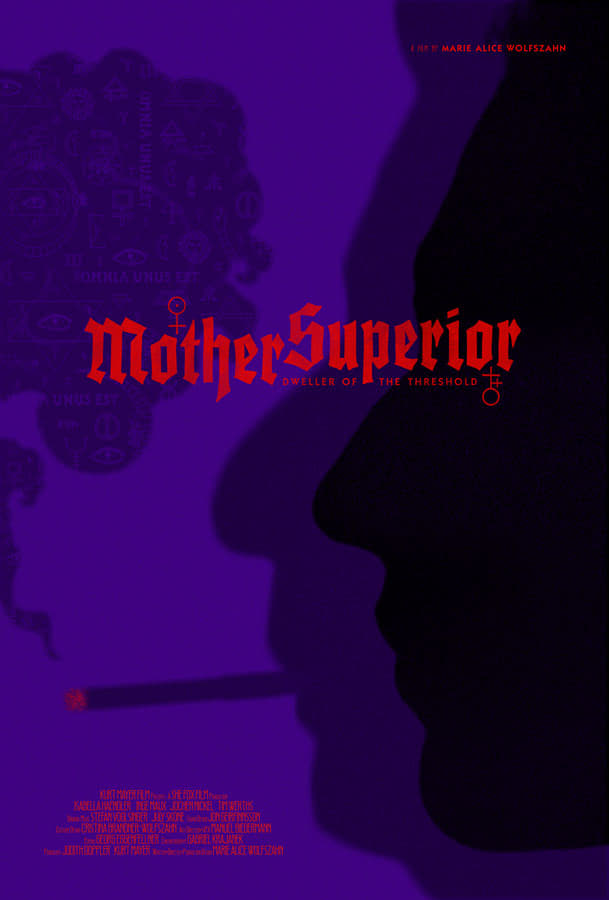
Guillaume Bellom – Schubert, Haydn & Debussy: Works for Piano (2017)
FLAC (tracks) 24 bit/96 kHz | Time – 01:12:17 minutes | 1,1 GB | Genre: Classical
Studio Masters, Official Digital Download – Source: Qobuz | Digital Booklet | © Claves Records
French pianist Guillaume Bellom creates plenty of dreamy moments in this wonderfully buoyant album. Even the most rumbling passages of Schubert float on an airy sea of sound. Listen as Debussy’s layers unfold with delicate precision as Bellom gives an essential interpretation.
“When you don’t have any money to go on holiday, you must make do by using your imagination,” Debussy wrote, and the first two pieces in his triptych Estampes constitute an exotic travelog; the third piece is stay-at-home music, watching the rain. “Estampes” means print or engraving, and these three pieces are musical depictions of particular moments at particular locales. They also represent an interior journey of sorts, a newly personal idiom for Debussy, who is now seemingly unconcerned with the conventions and expectations of the salon and the concert hall.
“Pagodes” (Pagodas) manages to seem still and flowing at the same time. The stillness comes from the score’s long pedal point, as well as from the harmonic restriction of the pentatonic scale, which is highly characteristic of Asian music. Despite this stasis, the music ultimately conveys smooth motion, thanks to Debussy’s imitation of Javanese gamelan music; it may also be an imitation of the “Laideronette, Empress of the Pagodas” movement from Ravel’s Ma mère l’oye. The music hovers mostly at low and medium dynamic levels, rising for only a couple of sonorous climaxes that soon recede into the softly tinkling texture.
“Soirée dans Grenade” takes listeners to Spain, but again the tour guide is Ravel, whose Habañera covers much the same musical territory. Debussy uses the same rhythm – which, technically, is Cuban rather than Spanish, although the French strongly associated it with the Iberian peninsula. Debussy’s dreamy treatment includes rather Moorish material and, except for two brief outbursts four-fifths of the way through, avoids the fast, fiery, flamenco-inspired effects that foreigners associate with Spanish music. Manuel de Falla thought highly enough of this piece to quote from it in his Homage to Debussy.
The final movement, in the great French keyboard tradition, is a toccata, although Debussy gives it a more fanciful title, “Jardins sous la pluie” (Gardens in the Rain). Judging from the movement’s rapidity, this is quite a downpour, although there’s little evidence of thunder or lightning; the challenge to the player is to maintain a light touch through most of the movement. The piece incorporates fragments of the French nursery songs “Do, do l’enfant do” and “Nous n’irons plus au bois,” suggesting a child unable to go out and play but taking great interest in the rain, watching snug behind some window.
Tracklist:
Franz Schubert (1797-1828)
Piano Sonata in G Major, D. 894
1 I. Molto moderato e cantabile
2 II. Andante
3 III. Menuetto
4 IV. Allegretto
Franz Joseph Haydn (1732-1809)
Piano Sonata in A-Flat Major, Hob. XVI. 46
5 I. Allegro moderato
6 II. Adagio
7 III. Finale. Presto
Claude Debussy (1862-1918)
Estampes, L. 100
8 I. Pagodes
9 II. La soirée dans Grenade
10 III. Jardins sous la pluie
Personnel
Guillaume Bellom (piano)
Download:
mqs.link_GuillaumeBellmSchubertHaydnDebussyWrksfrPian20172496FLAC.part1.rar
mqs.link_GuillaumeBellmSchubertHaydnDebussyWrksfrPian20172496FLAC.part2.rar










![Yan Levionnois, Guillaume Bellom - Malinconia (2023) [FLAC 24bit/96kHz] Yan Levionnois, Guillaume Bellom - Malinconia (2023) [FLAC 24bit/96kHz]](https://imghd.xyz/images/2023/06/07/vtsq336pmr3pb_600.jpg)
![Guillaume Bellom - Richard Strauss: Piano Works (2024) [FLAC 24bit/96kHz] Guillaume Bellom - Richard Strauss: Piano Works (2024) [FLAC 24bit/96kHz]](https://imghd.xyz/images/2024/04/04/zjtv4pbjdb7ec_600.jpg)
![Teodor Currentzis - Mozart: Don Giovanni, K. 527 (2016) [Qobuz FLAC 24bit/96kHz] Teodor Currentzis - Mozart: Don Giovanni, K. 527 (2016) [Qobuz FLAC 24bit/96kHz]](https://getimg.link/images/imgimgimg/uploads/2017/12/Royf8ol.jpg)
![Zuzana Ruzickova - J.S. Bach: The Complete Keyboard Works (2016) [FLAC 24bit/96kHz] Zuzana Ruzickova - J.S. Bach: The Complete Keyboard Works (2016) [FLAC 24bit/96kHz]](https://getimg.link/images/imgimgimg/uploads/2018/09/r94XYtX.jpg)
![Glenn Gould - The Complete Columbia Album Collection (2015 Remastered Edition) [Qobuz FLAC 24bit/44,1kHz] Glenn Gould - The Complete Columbia Album Collection (2015 Remastered Edition) [Qobuz FLAC 24bit/44,1kHz]](https://getimg.link/images/imgimgimg/uploads/2017/07/2bHwfbA.jpg)
![Max Emanuel Cencic - Handel: Ottone, HWV 15 (2017) [Qobuz FLAC 24bit/96kHz] Max Emanuel Cencic - Handel: Ottone, HWV 15 (2017) [Qobuz FLAC 24bit/96kHz]](https://getimg.link/images/imgimgimg/uploads/2017/11/9uXCAkQ.jpg)
![Gianluca Luisi - Bach: French Suites, BWV 812-817 (2018) [FLAC 24bit/88,2kHz] Gianluca Luisi - Bach: French Suites, BWV 812-817 (2018) [FLAC 24bit/88,2kHz]](https://getimg.link/images/imgimgimg/uploads/2019/10/LIyhrow.jpg)
![Vladimir Ashkenazy - Bach: French Suites, BWV 812-817 (2017) [Qobuz FLAC 24bit/96kHz] Vladimir Ashkenazy - Bach: French Suites, BWV 812-817 (2017) [Qobuz FLAC 24bit/96kHz]](https://getimg.link/images/imgimgimg/uploads/2017/12/fibDaF8.jpg)
![Maria Callas - Remastered The Complete Studio Recordings 1949-1969 (2014) [Qobuz FLAC 24bit/96kHz] Maria Callas - Remastered The Complete Studio Recordings 1949-1969 (2014) [Qobuz FLAC 24bit/96kHz]](https://getimg.link/images/imgimgimg/uploads/2018/12/Vw7IHlv-1.jpg)
![Murray Perahia - Bach: The French Suites (2016) [FLAC 24bit/96kHz] Murray Perahia - Bach: The French Suites (2016) [FLAC 24bit/96kHz]](https://getimg.link/images/imgimgimg/uploads/2018/03/7OIXrV4.jpg)
![Ismael Margain, Guillaume Bellom - Schubert (2013) [Qobuz FLAC 24bit/88,2kHz] Ismael Margain, Guillaume Bellom - Schubert (2013) [Qobuz FLAC 24bit/88,2kHz]](https://getimg.link/images/imgimgimg/uploads/2018/02/cd9vVgS.jpg)
![Le Cercle de l’Harmonie & Jeremie Rhorer - Mozart: Don Giovanni, K. 527 (2017) [Qobuz FLAC 24bit/48kHz] Le Cercle de l’Harmonie & Jeremie Rhorer - Mozart: Don Giovanni, K. 527 (2017) [Qobuz FLAC 24bit/48kHz]](https://getimg.link/images/imgimgimg/uploads/2018/07/jJXpH99.jpg)
![Quartetto Italiano - Claude Debussy, Maurice Ravel: String Quartets (1967/2016) [e-Onkyo FLAC 24bit/192kHz] Quartetto Italiano - Claude Debussy, Maurice Ravel: String Quartets (1967/2016) [e-Onkyo FLAC 24bit/192kHz]](https://getimg.link/images/imgimgimg/uploads/2018/08/nYjo99Q.jpg)
![Quatuor Girard & Guillaume Bellom - Saint-Saens Quatuor A cordes No. 1 (2019) [FLAC 24bit/96kHz] Quatuor Girard & Guillaume Bellom - Saint-Saens Quatuor A cordes No. 1 (2019) [FLAC 24bit/96kHz]](https://getimg.link/images/imgimgimg/uploads/2019/12/ObcG0Mj.jpg)
![Sir Colin Davis, London Symphony Orchestra - Haydn: Symphonies Nos. 92 & 93, 97-99 (2014) [Qobuz FLAC 24bit/96kHz] Sir Colin Davis, London Symphony Orchestra - Haydn: Symphonies Nos. 92 & 93, 97-99 (2014) [Qobuz FLAC 24bit/96kHz]](https://getimg.link/images/imgimgimg/uploads/2017/08/O1wILBY.jpg)